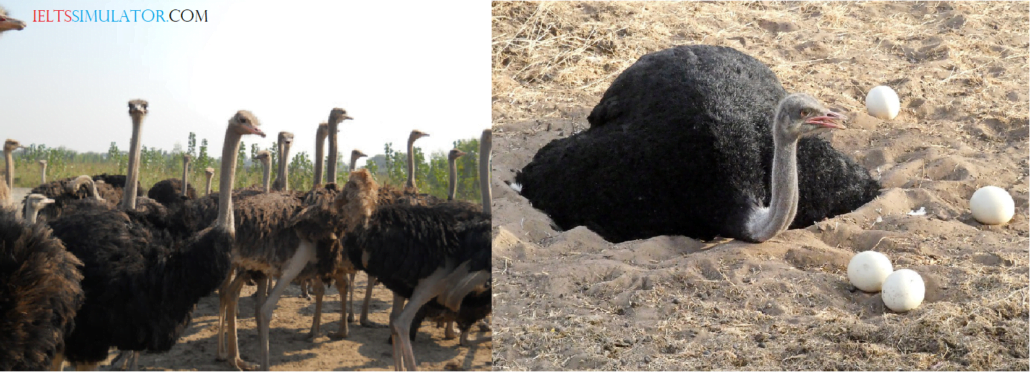
IELTS LISTENING S51T4
Ostrich Farming
PAULA: Today I’d like to introduce Ted Hunter, who used to rear sheep and poultry but he was here to tell us about a rather unusual type of livestock that he’s been concentrating on in the last few years. Ted Hunter is a member of the Domesticated Ostrich Farming Association, and is here to tell us about the possibilities of breeding and rearing these birds in this country.
Attempt full listening test…
TED: Thank you, Paula. When you look at international restaurant menus and supermarkets they all tend to feature the same range of meats – beef, lamb, chicken, pork, that sort of thing. But people are always interested in something different and we’re now finding that farming can bring new types of meat to our tables. The kangaroo is one animal that’s now being farmed for its meat and eaten outside Australia, where it comes from. It looks and tastes rather like Q31 rabbit, though it’s slightly darker in color, but it is Q32 rather tough, so that’s a problem for some people. Crocodiles are also being farmed for their meat. This is rather like chicken, pale and tender, and it’s getting quite fashionable. Some people also find it’s rather fatty, but I think it makes a really tasty sandwich. Now a third type of meat becoming increasingly available, and the one that I think is by far the nicest of the three, is ostrich, which most people say has a similar taste and texture to Q33 beef. However, it’s much better for you than beef, as we’ll see later. Most people think of ostriches as wild animals, but in fact ostriches have been farmed in South Africa since around 1860. At first they were produced for their feathers. In Africa they were used for tribal ceremonial dress and they were also exported to Europe and America where they were made into Q34 ladies fans and used for decorating hats. Later, feather fans and big, decorated hats went out of fashion but ostriches were still bred, this time for their hide. This can be treated to produce about half a square meter of Q35 leather – very delicate, fine stuff a very good quality. At the same time, some of the Q36 meat was used for biltong – the air-dried strips of meat popular in South Africa as a sort of fast food. However, recently there’s been more and more interest in the development of ostrich farming in other parts of the world, and more people are recognizing its value as a food source. Ostrich meat is slightly Q37 higher in protein than beef- and much lower in fats and cholesterol. It tastes good too. A series of European taste tests found that 82 percent of people prefer ostrich to beef. And one ostrich produces a lot of meat – from around 30 to 50 kilograms, mostly from the hindquarters of the bird. Farmed ostriches don’t need African climates, and in fact ostrich farming is now becoming well established in other parts of the world. However, setting up an ostrich farm isn’t something to embark on lightly. Mature breeding birds are very expensive – even a fertilized Q38 ostrich egg isn’t cheap so you need quite a bit of capital to begin with. Then the farmer needs special equipment such as incubators for the eggs. The young chicks are very dependent on human minders, and Q39 need a lot of attention from the people looking after them. In addition, ostriches can’t be intensively farmed – they need space and exercise.